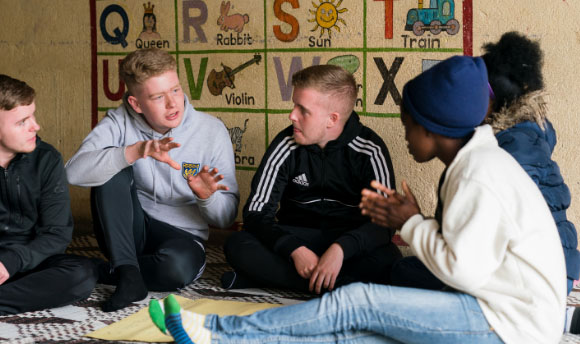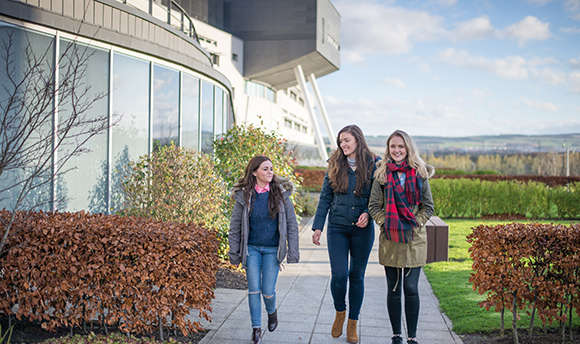Did you know that September 23 is the International Day of Sign Languages? Designated by the UN General Assembly, the aim is to raise awareness of sign languages and the importance of sign language to enable deaf people to realise their human rights. It is also an opportunity to celebrate the wonderful linguistic diversity of the many different sign languages around the world.
How much do you know about sign languages?
Do you know that British Sign Language (BSL)is the official sign language used in the UK? That Scotland was the first part of the UK to legislate for its indigenous sign language? Scotland has had a BSL Act since 2015, recognising deaf sign language users as a linguistic minority in Scotland, and the Act also puts a duty on public bodies to publish their own strategic plans on the promotion and understanding of BSL. You have probably seen more BSL video clips popping up on websites, and more sign language on Scottish government announcements thanks to this legislation.
Raising awareness of the importance of sign language for the human rights of deaf people is much needed. In recent years BSL has become more visible in the media, but unfortunately it doesn’t always mean that deaf people have equal access in society, they still face many barriers and inequalities. Deaf people experience poorer health outcomes than the general population, and experience significantly poorer mental health with rates double that of non-deaf (hearing) people (Fellinger et al, 2012)
Usually, when I tell someone that I am a professional sign language interpreter and that I work with deaf people, I get similar responses. Sometimes they tell me they’ve always wanted to learn sign language, and they show me that they can spell their own name. Often, they relay an encounter they had with a deaf sign language user, and how awkward they felt:
‘When they signed to me, I didn’t know what to do and I just froze’
‘I’ve never been taught sign language, and I couldn’t even say one simple thing to them’
I’ve been told this by frontline staff, security guards, teachers, medical professionals; all of them expressing their frustration at not being able to communicate with the person in front of them because they didn’t know what to do. They had never been taught about sign language, or how to interact with a deaf person who uses BSL. For many people, working with deaf sign language users is a topic that has never been included in their initial training, or when they were studying for their qualifications.
I’ve also seen this happen in the community in the course of my work as an interpreter. For example, I’ve been in a waiting room with a deaf service user, booked to interpret at their medical appointment. The healthcare professional comes out to the waiting room and shouts the service user's name. When they see someone signing and someone else speaking this is often the first time that the professional realises that their service user is deaf. The surprise on their face is clear, that they weren’t expecting an interpreter to be facilitating this session. They must rapidly reconsider their approach as we walk to the clinic room, and adjust to this new situation: where they cannot directly communicate with the service user, and must work via an interpreter.
This might feel like a new phenomenon when it happens to you, but in the field of interpreting and working with deaf people, this phenomenon has had a name since the 1970s: Shock-Withdrawal-Paralysis. (Schlesinger and Meadow-Orlans, 1972). It’s a recognised phenomenon that medical professionals working with deaf sign language users should have been alerted to. It happens when any non-deaf professional who doesn’t know sign language unexpectedly meets a deaf service user, and they feel stuck in trying to communicate with them. Feeling helpless becomes the overriding thought, you freeze, and your usual skill and competency in your job is reduced (Pollard 1994).
Recognising this emotional response and acknowledging it, is the first step to not letting it be detrimental to your encounter with a deaf sign language user. The next step would be to anticipate this surprise, and undertake some learning in this area to address the training gap.
More availability of training course choices is just one of the reasons why at QMU we developed a short course on Working with Sign Language Users and Interpreters. Rachel Mapson and I (Yvonne) created this course as experienced sign language interpreters and educators, with lots of input from deaf people, native sign language users, to help address the training gap that many non- deaf professionals face.
Learning some sign language is a great first start, but you also need to know the cultural background to working with deaf sign language users, the challenge of language deprivation they have experienced, and how these issues impact on their lived experience. Our short course covers all these topics and includes practical tips for working effectively with deaf sign language users to ensure equitable access. Person-centred care is at the core of many allied health professionals’ work, and gaining more knowledge and understanding in this area, is something that previous course participants have commented on:
I just wanted to thank yourself, and the team for putting together such an interesting and informative course. It was extremely eye-opening, and I believe it has changed the way I will work and interact with all people from now on.
Feedback from Hannah Herron, NHS Scotland Staff Member
At QMU we recognise the importance of this knowledge in initial training for professionals and have embedded the teaching of BSL and working with deaf people in our Paramedic Science BSc, BA (Hons) Education Studies (Primary), Audiology MSc, and Speech and Language Therapy MSc and BSc Hons.
If you work in a public body like the NHS, a local authority, or for the Scottish Government, it’s likely you will have responsibilities under the BSL (Scotland) Act 2015, where increased knowledge and understanding would be useful. It may not be your service users or clients that are deaf sign language users, but their parents, family members, or carers. How will you make your service accessible if you provide services to the general public?
Perhaps you’re also interested in finding out more about sign languages and deaf culture:
Are there different accents in British Sign Language?
Is American Sign Language very different from BSL?
Can you tell where someone learned just by the way they sign?
Yes, yes and yes. We’ve curated lots of additional material for each topic block, where you can delve into more areas you’re interested in, and learn more about sign languages, deaf cultures and deaf people.
Almost all of the non-deaf professionals I meet are keen to provide an equitable service and have no intention of discriminating against sign language users. However, due to their cultural naivety, and lack of knowledge, people can unwittingly create barriers and deny sign language users their rights. In your role, if you were asked about whether you would provide services to deaf people, you would likely respond “of course we would.” But do you know how to go about booking an interpreter, best practice when working with them, or how to commission a translation? This course will turn your good intentions into skills and knowledge that you can apply in your workplace. The course is completely online and asynchronous, meaning you can fit your study around times that suit you, and download material to engage with later. The course runs twice a year in September and February for 6 weeks. More information is available here: or contact the course coordinator with any questions: Yvonne Waddell YWaddell@qmu.ac.uk
References:
Fellinger, J., Holzinger, D., & Pollard, R. (2012). Mental health of deaf people. The Lancet, 379(9820), 1037-1044.
Schlesinger, H. S., & Meadow-Orlans, K. P. (1972). Sound and sign: Childhood deafness and mental health (p. 7). Berkeley: University of California Press.
Pollard Jr, R. Q. (1994). Public mental health service and diagnostic trends regarding individuals who are deaf or hard of hearing. Rehabilitation Psychology, 39(3), 147.







